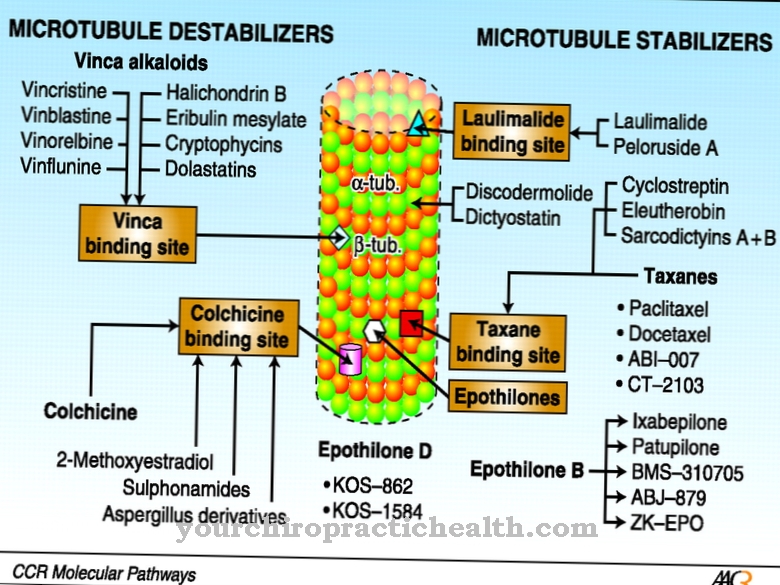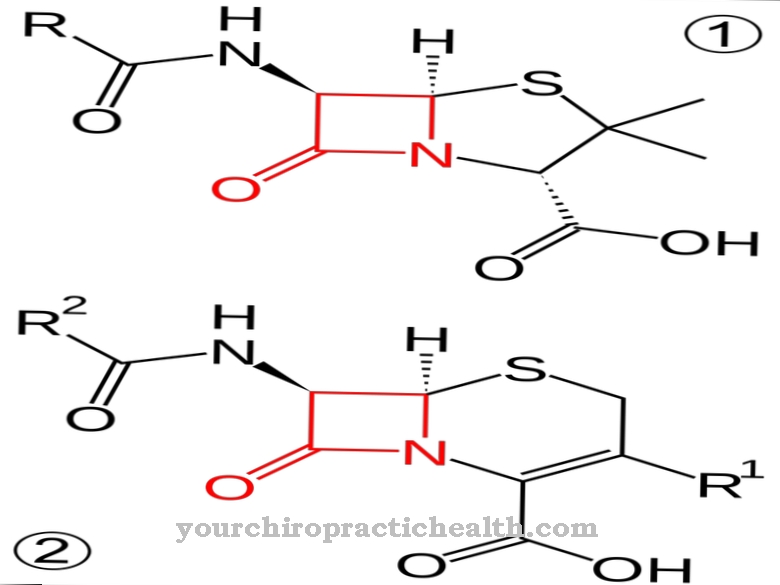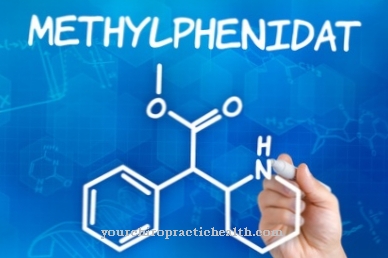Glucagon is a hormone of the pancreas and an important regulator of the blood sugar level in the organism. It is mainly used as an active ingredient in hypoglycemic conditions during diabetes.
What is Glucagon?

Glucagon is the direct antagonist of insulin. While insulin lowers blood sugar levels, glucagon has the opposite effect.
Chemically, glucagon is a polypeptide made up of 29 amino acids and is produced in the islets of Langerhans in the pancreas. The secretion of glucagon is usually less volatile than insulin. Both hormones regulate the energy metabolism of the organism and ensure a relatively constant blood sugar level.
Is there e.g. B. Energy requirements in stressful situations, the production of glucagon is stimulated in order to be able to provide energy quickly in the form of glucose.
Pharmacological effect
The interaction of the two hormones is controlled by a complicated control mechanism. The changes in blood sugar level caused by diet determine which hormone is produced primarily.
Food rich in carbohydrates instantly increases blood sugar levels, which leads to an increase in insulin production. However, if a lot of energy is consumed by physical activity or stress, glucose has to be reproduced to provide energy. This in turn stimulates the production of glucagon. A low-carbohydrate and high-protein diet also leads to increased secretion of Glucagon.
Furthermore, hypoglycemia also immediately stimulates glucagon production. Insulin is responsible for storing excess energy in the form of fat in the fat cells or glycogen in the liver. However, when there is a need for energy, the organism has to provide energy quickly. Glucagon does this in two different ways. For example, it stimulates glycogenolysis of glycogen. The glycogen stored in the liver as a complex carbohydrate is broken down back into glucose.
Like starch, glycogen is a multiple sugar made up of glucose units. During glycogenolysis, this molecule is broken down again into its individual components, i.e. into individual glucose molecules. Glucagon can also convert raw materials that are not primarily sugar into glucose. This process is called gluconeogenesis. Proteins and fats serve as starting materials here. In this way, when there is an increased need for glucose, amino acids are converted into sugar.
When fat is broken down, fatty acids and glycerine are first produced. Glycerine is then the starting material that can be converted into glucose. As a side effect of the increased protein and fat breakdown, increased urea and fatty acid concentrations in the blood result. At the same time, glucagon inhibits protein, fat and glucogen synthesis.
Medical application & use
How the Glucagons also determines its areas of application. It is often used as a drug for diabetics. Hypoglycaemia often occurs especially in people with diabetes. This can happen if too few carbohydrates are taken in during insulin administration.
These hypoglycemic (low blood sugar) conditions can become life-threatening as the body is no longer supplied with sufficient energy. An undersupply of the brain with glucose is particularly critical. In these cases, a solution of glucagon is injected under the skin or intramuscularly. The blood sugar level then returns to normal within a short time. There is also a glucagon test that can be used to determine the concentration of the C-peptide.
The C-peptide is a precursor to insulin. This rarely used test is a function test for the pancreas and can be used to differentiate between diabetes A and diabetes B. In addition, glucagon is used as a stomach and intestinal immobilization drug for endoscopy of the intestine or X-ray of the stomach. Another application is the use in case of poisoning with beta blockers.
Risks & side effects
Side effects occur with treatment with Glucagon only very rarely. In individual cases nausea and vomiting can occur if the injection is too rapid and if higher concentrations are given. However, overdosing has no long-term negative effects. Interactions with other drugs are also usually not known. Even when using glucagon in diabetic pregnant women, there are no side effects because it cannot cross the placental barrier.
However, glucagon should not be used in certain rare tumors of the pancreas, such as: B. glucagonoma or insulinoma and pheochromocytoma, a tumor of the adrenal medulla.



























